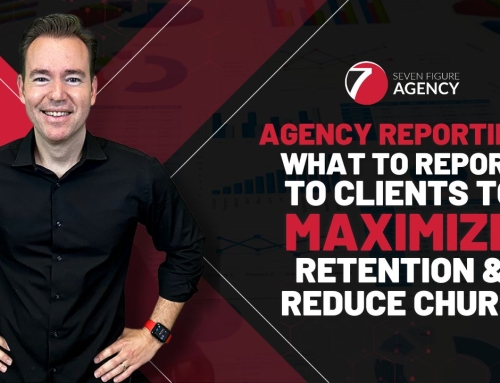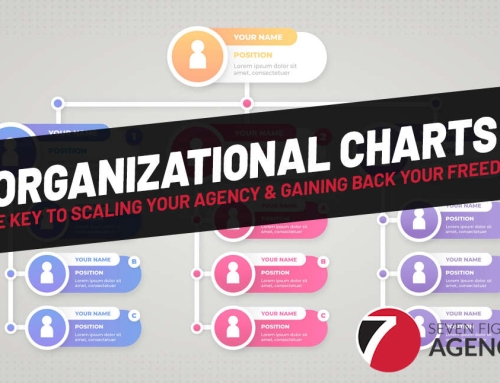Looking for the right digital marketing agency pricing model can be daunting. Imagine a scenario where you’re a small business owner seeking to promote a new product. Understanding the various pricing models can help you make an informed decision.
Hourly rate, project-based, retainer, performance-based, commission-based, value-based, package, and subscription-based are the eight key digital marketing agency pricing models. Each model has its own advantages and considerations, and choosing the right one can significantly impact your marketing campaign’s success and overall budget.
By exploring these models, you can gain a deeper insight into which pricing structure aligns best with your business goals and budget constraints.
Key Takeaways
- Fixed pricing models include flat fee pricing, hourly rate pricing, project-based pricing, retainer pricing, and package pricing.
- Performance-based pricing models include cost per click (CPC), cost per thousand impressions (CPM), cost per action (CPA), revenue sharing, and pay for performance.
- Value-based pricing models include percentage of ad spend, percentage of revenue generated, return on investment (ROI) based pricing, customer lifetime value (CLV) based pricing, and tiered pricing based on service levels.
- Subscription-based pricing models include monthly subscription pricing, annual subscription pricing, tiered subscription pricing based on features, usage-based pricing, and freemium pricing model.
Hourly Rate
When hiring a digital marketing agency, the hourly rate is an important factor to consider. Many agencies offer flexible rates, allowing you to scale services based on your budget and needs. This can be particularly beneficial for small businesses or startups with limited resources. By paying for the actual time spent on your project, you have the flexibility to adjust the scope of work as needed without being locked into a fixed contract.
Client satisfaction is a top priority for digital marketing agencies offering hourly rates. Since they’re billing based on the time spent, there’s a strong incentive to deliver high-quality work efficiently. This model encourages agencies to be transparent about the time spent on each task and ensures that clients are only billed for actual work completed. As a result, clients can have peace of mind knowing that their budget is being used effectively and that the agency is motivated to deliver results in a timely manner.
Transitioning into the subsequent section about ‘project-based pricing’, it’s important to note that while hourly rates offer flexibility and transparency, project-based pricing can provide predictability and a clear understanding of the overall cost. Let’s delve into the specifics of this pricing model and how it may align with your digital marketing needs.
Project-Based Pricing
With project-based pricing, you can anticipate the total cost of your digital marketing services upfront, giving you a clear understanding of your financial commitment. This pricing model is beneficial for clients who prefer a structured approach and want to avoid unexpected costs. Here’s why project-based pricing may be the right fit for you:
- Cost Transparency: You’ll receive a detailed quote for the entire project, allowing you to allocate your budget accurately and plan for the expenditure without any surprises.
- Client Satisfaction: Knowing the total cost upfront can lead to greater client satisfaction as it eliminates any ambiguity regarding the financial aspect of the project, fostering trust and transparency between you and the digital marketing agency.
- Innovative Solutions: Digital marketing agencies may be motivated to provide innovative solutions within the set budget, ensuring that the project is delivered with creativity and efficiency.
- Project Management: With a clear scope and budget, project management becomes more streamlined, as both parties have a defined understanding of the deliverables, timeline, and financial investment.
Project-based pricing not only provides clarity in terms of costs but also encourages a collaborative and goal-oriented approach between you and the digital marketing agency. As we delve into the next section on the ‘retainer model’, you’ll explore another pricing model that may align more closely with your ongoing digital marketing needs.
Retainer Model
With the retainer model, you pay a fixed monthly fee to the agency in exchange for a set of services. This model requires an ongoing commitment from both you and the agency, fostering a stronger, more collaborative relationship.
Fixed Monthly Fee
You pay a set monthly fee for a specified scope of digital marketing services under the fixed monthly fee (retainer) model. This model offers several advantages and disadvantages:
- Fixed Fee Advantages:
- Predictable Costs: With a fixed monthly fee, you can easily budget and forecast your marketing expenses.
- Priority Service: Agencies often prioritize retainer clients, ensuring prompt attention and dedicated resources for ongoing campaigns.
- Fixed Fee Disadvantages:
- Potential Overpayment: If your marketing needs fluctuate, you may end up paying for services you don’t fully utilize.
- Scope Limitations: Changes in strategy or unexpected needs may require additional fees, potentially limiting flexibility.
The fixed monthly fee model can provide stability and dedicated attention, but it’s essential to carefully assess your ongoing marketing needs to ensure cost-effectiveness.
Ongoing Client Commitment
Under the ongoing client commitment (retainer) model, a digital marketing agency provides continuous services for a set monthly fee. This model emphasizes client retention and long-term commitment. By establishing an ongoing relationship with clients, digital marketing agencies can prioritize customer satisfaction and provide tailored, sustained support.
The retainer model allows businesses to access consistent digital marketing services, such as social media management, content creation, SEO, and performance tracking, without the need for separate contracts or negotiations for each service. This approach fosters a deeper understanding of the client’s brand and objectives, enabling the agency to deliver more targeted and effective marketing strategies.
Additionally, the retainer model encourages collaboration and transparency, as the agency and the client work closely together to achieve long-term marketing goals.
Predictable Revenue Stream
Emphasizing consistent revenue generation, the retainer model ensures a predictable stream of income for digital marketing agencies. This model provides stability by offering a fixed monthly fee in exchange for a set of services. With revenue forecasting as a key benefit, agencies can better project their financial future and allocate resources effectively. Additionally, the retainer model fosters long-term partnerships with clients, as it incentivizes agencies to consistently deliver value, leading to increased client satisfaction.
Furthermore, this approach contributes to financial stability, as the recurring nature of the retainer model allows agencies to plan and budget with confidence. Ultimately, it encourages a focus on quality and long-term results, benefitting both the agency and the client.
Transitioning into the subsequent section about ‘performance-based pricing’, let’s explore another approach to agency compensation.
Performance-Based Pricing
When considering performance-based pricing for digital marketing agency services, it’s important to carefully assess the specific metrics and goals that will drive the payment structure.
Performance-based pricing, also known as pay for results or outcome-driven marketing, ties the agency’s compensation directly to the success of the campaigns they manage for you. This model aligns the interests of the agency with your business goals, ensuring that their efforts are focused on delivering tangible results.
In a performance-based pricing model, the key metrics that define success must be clearly defined and agreed upon by both parties. These metrics could include lead generation, conversion rates, customer acquisition costs, return on ad spend, or other key performance indicators (KPIs) relevant to your business objectives. It’s crucial to have a comprehensive understanding of these metrics and how they’ll be measured to avoid any misunderstandings in the future.
Additionally, the payment structure should be transparent and fair, with clear benchmarks and incentives for achieving or surpassing the established goals. This can motivate the agency to continuously optimize their strategies and tactics to drive better results, as their compensation is directly tied to the performance of the campaigns.
However, it’s important to carefully evaluate the feasibility and potential risks associated with a performance-based pricing model. While it can be an effective way to ensure that you’re paying for tangible results, it may not be suitable for all types of digital marketing services or industries. Therefore, thorough consideration and a clear understanding of your business objectives are essential before opting for this pricing model.
Commission-Based Model
If you’re considering a commission-based model for your digital marketing agency, you’ll be setting up a payment structure that directly ties compensation to sales performance.
This sales-driven approach incentivizes your team to prioritize results over time, aligning their efforts with your business goals.
Performance-Based Payment Structure
You pay the digital marketing agency a commission based on the performance of the campaigns they run for you. This payment model, also known as a performance-based payment structure, offers a payment guarantee to you while aligning the agency’s incentives with your business goals. Here’s how it works:
- Advantages of Performance-Based Payment Structure:
- Provides a risk-reward model where the agency is incentivized to deliver exceptional results.
- Aligns the agency’s interests with yours, ensuring they’re motivated to maximize campaign performance.
Sales-Driven Compensation Model
Continuing from the previous subtopic’s performance-based payment structure, a sales-driven compensation model, also known as a commission-based model, directly ties the agency’s compensation to the sales generated from the marketing campaigns they execute for your business. This model can be highly motivating for the agency, as their earnings are directly linked to the success of your sales. It aligns the interests of the agency with your business goals, as they are incentivized to create and execute highly effective marketing campaigns that drive tangible results. Below is a table that outlines the key features of the sales-driven compensation model:
| Sales-Driven Compensation Model | |
|---|---|
| Pros | Cons |
| – Highly motivating for the agency | – Potential for conflicting priorities |
| – Aligns agency’s interests with your business goals | – May lead to short-term focus |
| – Incentivizes effective marketing campaigns | – Complexity in tracking and attributing sales |
In essence, the sales-driven compensation model can be a powerful tool for motivating your digital marketing agency to drive tangible sales results for your business.
Incentivizes Results Over Time
Transitioning from the sales-driven compensation model, the commission-based model incentivizes the agency to drive results over time through a structured payment system tied to the ongoing performance of the marketing campaigns they implement for your business. This model aligns the agency’s incentives with your long term success and growth, as their compensation is directly linked to the effectiveness of the strategies deployed.
Here’s what you should consider:
- Long-Term Strategy: By opting for a commission-based model, you encourage the agency to focus on sustained growth rather than short-term wins.
- Aligned Goals: The agency’s success becomes intertwined with yours, fostering a collaborative approach geared towards achieving lasting results.
Value-Based Pricing
When considering digital marketing agency pricing models, it’s essential to understand the concept of value-based pricing. This model ties the price of services to the value they provide to the client, rather than the cost of production or the hours worked. In this approach, the focus isn’t solely on the deliverables but on the impact and results achieved for the client. Value-based pricing is rooted in the idea of aligning the agency’s incentives with the client’s goals. By emphasizing customer satisfaction and long-term relationships, this model aims to create a win-win scenario where both parties benefit from the collaboration.
Value-based pricing encourages digital marketing agencies to prioritize customer satisfaction. By tying the pricing to the value delivered, the agency is inherently motivated to go above and beyond to ensure that the client’s needs aren’t only met but exceeded. This can result in a more client-focused approach, where the agency is driven by the desire to truly make a difference for the client’s business.
Moreover, value-based pricing fosters long-term relationships between the agency and the client. Since the pricing is based on the impact of the services provided, the agency is incentivized to continually demonstrate its value. This can lead to a more collaborative and enduring partnership, where the agency becomes a trusted advisor invested in the client’s long-term success.
Package Pricing
To further explore digital marketing agency pricing models, let’s delve into the concept of package pricing. Package pricing offers customized packages and flexible options tailored to meet the diverse needs of clients.
Here’s what you need to know:
- Customized Packages: Digital marketing agencies understand that one size doesn’t fit all when it comes to client needs. With package pricing, agencies can create customized packages that cater to the specific requirements of each client. This means that you can select a package that aligns with your unique business goals, budget, and target audience. Whether you’re looking for a comprehensive digital marketing solution or a specific service such as social media management or search engine optimization, package pricing allows you to choose a tailored package that best suits your needs.
- Flexible Options: Package pricing provides clients with flexible options that can be adjusted based on changing business needs. If you need to scale up or down your digital marketing efforts, the flexibility offered by package pricing allows for seamless adjustments. This ensures that you aren’t locked into a rigid pricing structure and can adapt your marketing strategy as your business evolves.
Package pricing offers a transparent and structured approach to digital marketing services, giving clients the freedom to select customized packages and adapt to changing business requirements.
Subscription-Based Model
Consider a subscription-based model if you are seeking a predictable and recurring payment structure for your digital marketing services. This pricing model offers customers the convenience of a fixed monthly fee for ongoing access to your agency’s expertise and services. It provides you with a steady stream of revenue and allows for better long-term planning. By implementing a subscription-based model, you can enhance customer retention and achieve revenue stability, as clients are more likely to stay engaged with your agency when they are on a subscription plan.
| Pros | Cons |
|---|---|
| Predictable revenue stream | Initial resistance from clients |
| Enhanced customer loyalty | Potential for underutilization |
| Long-term planning capability | Difficulty in adjusting prices |
| Opportunity for upselling | Potential for scope creep |
This model fosters a sense of partnership between your agency and its clients, encouraging a long-term commitment and ensuring a steady income stream for your business. However, it’s important to carefully consider the pricing structure to avoid underutilization by clients and to allow for potential adjustments in the future. Subscription-based pricing can be an effective strategy for building a loyal customer base and establishing revenue stability, making it a compelling option for digital marketing agencies looking to create a more predictable income stream.
Frequently Asked Questions
What Are Some Common Pitfalls to Avoid When Choosing a Digital Marketing Agency Pricing Model?
When choosing a digital marketing agency pricing model, keep an eye out for common pitfalls to avoid.
Look for pricing flexibility to ensure that you can adjust your budget and strategy as needed. Avoid falling for rigid contracts that don’t allow for changes or adjustments.
Be mindful of hidden fees or unexpected costs that could impact your budget. Prioritize transparent pricing structures to avoid any surprises down the road.
How Do Digital Marketing Agencies Determine the Value They Provide in a Value-Based Pricing Model?
When determining the value in a value-based pricing model, digital marketing agencies assess the impact of their services on your business. They consider factors like customer satisfaction, ROI, and overall business growth.
What Are the Advantages and Disadvantages of a Subscription-Based Pricing Model for Digital Marketing Services?
When it comes to a subscription-based pricing model for digital marketing services, there are advantages and disadvantages to consider.
On one hand, it offers predictable costs and ongoing support, which can be convenient for clients.
However, it may lead to overpaying for underutilized services.
The impact of pricing models on client satisfaction is crucial, and a subscription-based model can provide stability but may not always align with specific campaign needs.
Can Digital Marketing Agencies Combine Different Pricing Models to Create a Custom Pricing Plan for Clients?
Yes, digital marketing agencies can combine different pricing models to create a custom pricing plan for clients.
This approach allows for flexibility and tailored solutions to meet the specific needs of each client.
By offering custom pricing, agencies can improve client satisfaction, as they’re able to accommodate varying budget constraints and service requirements.
This can lead to stronger long-term relationships and enhanced results for both the agency and its clients.
How Do Digital Marketing Agencies Ensure Transparency and Accountability in Performance-Based Pricing Models?
To ensure transparency and accountability in performance-based pricing models, digital marketing agencies track performance metrics diligently. They communicate these results to clients regularly, fostering trust and transparency.
By using advanced analytics tools, agencies can provide detailed insights into campaign performance. This allows clients to make informed decisions and understand the value they receive.
Clear communication and data-driven reporting are key to maintaining transparency and accountability in performance-based pricing models.
Final Thoughts
Choosing the right digital marketing agency pricing model is like finding the perfect pair of shoes – it needs to fit your business just right.
Each model offers its own unique benefits and drawbacks, so take the time to evaluate your needs and goals before making a decision.
With the right pricing model, you’ll be able to step confidently into the world of digital marketing and achieve the success you’ve been dreaming of.





